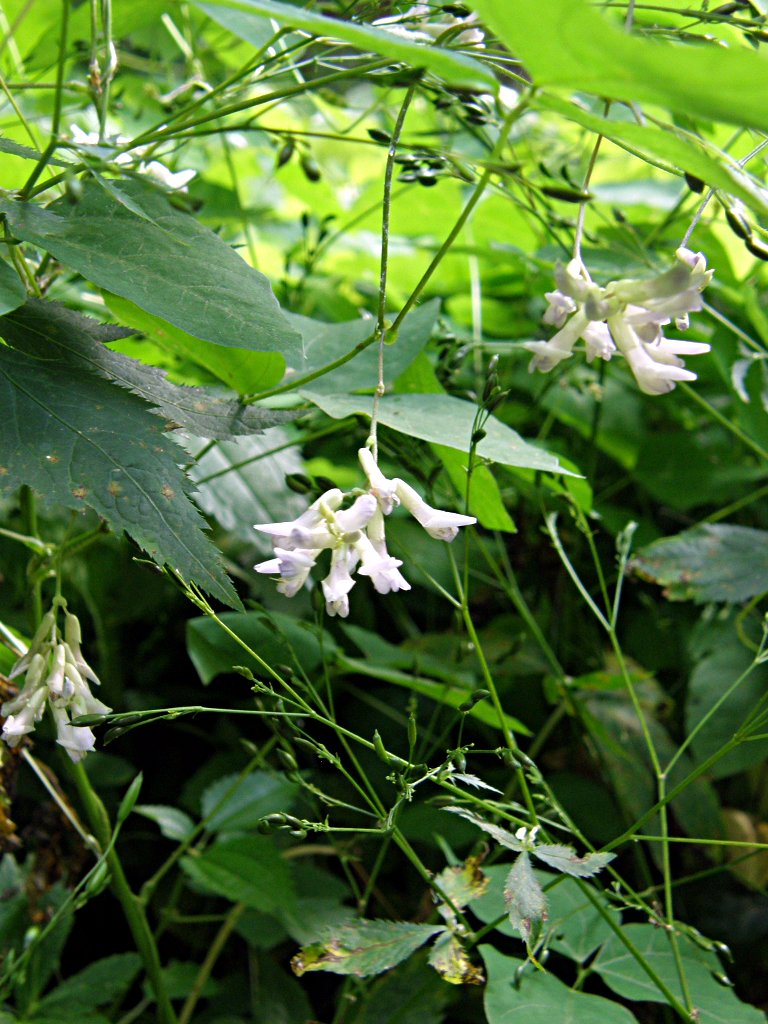 Photographed August 22.
Photographed August 22. Photographed August 22.
Photographed August 22.A vine that twines its way through the underbrush along creeks and streams, dangling clusters of flowers in white, pink, or purple. These flowers produce seeds, but the vine also grows less showy flowers near the ground that turn into a single underground seed, like a peanut. These vines were found in Bird Park in Mount Lebanon.


Gray describes the genus (listed as Amphicarpa) and species (listed as A. monoica):
AMPHICARPA Ell. HOG PEANUT
Flowers of 2 (or 3) kinds; those of the racemes from
the upper branches perfect; those near the base and on
filiform creeping branches with the corolla none or
rudimentary, and few free stamens, but fruitful;
reduced flowers of slightly different form sometimes
also on aerial racemes. Calyx about equally 4 (rarely
5)-toothed. Stamens diadelphous. Pods of the upper
flowers, when formed, somewhat scimiter-shaped,
stipitate, 3-4-seeded; of the lower ones commonly
subterranean and fleshy, obovate or pear-shaped,
ripening usually but one large seed. Low and slender
perennials; the twining stems clothed with brownish
hairs. Leaves pinnately 3-foliolate; leaflets
rhombic-ovate, stipellate. Petals purplish. Bracts
persistent, round, partly clasping, striate. as well
as the stipules. (Name from amphi, both, and
karpos, fruit, in allusion to the two kinds
of pods.) FALCATA Gmel.
A. monoica (L.) Ell. Leaflets thin, 1.3-5 cm. long; racemes nodding; calyx of the upper flowers 4 mm. long; the ovary glabrous except the mostly appressed hairy margin; pod 2.5 cm. long; ovary and pod of the rudimentary flowers hairy. (Falcata comosa Am. auth.; Glycine comosa L. ?) Rich damp woodlands, common. Aug., Sept.

 Photographed August 25.
Photographed August 25.